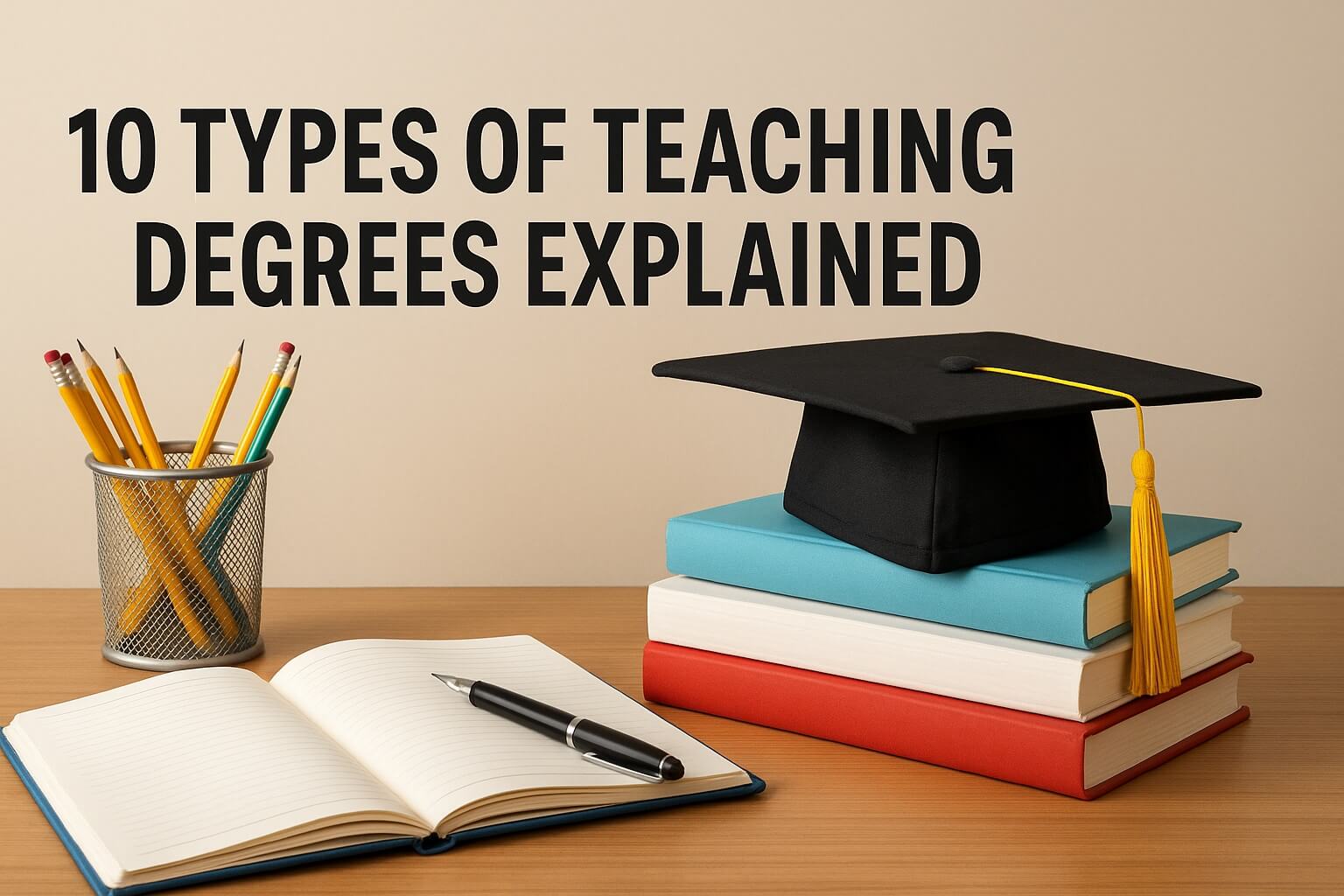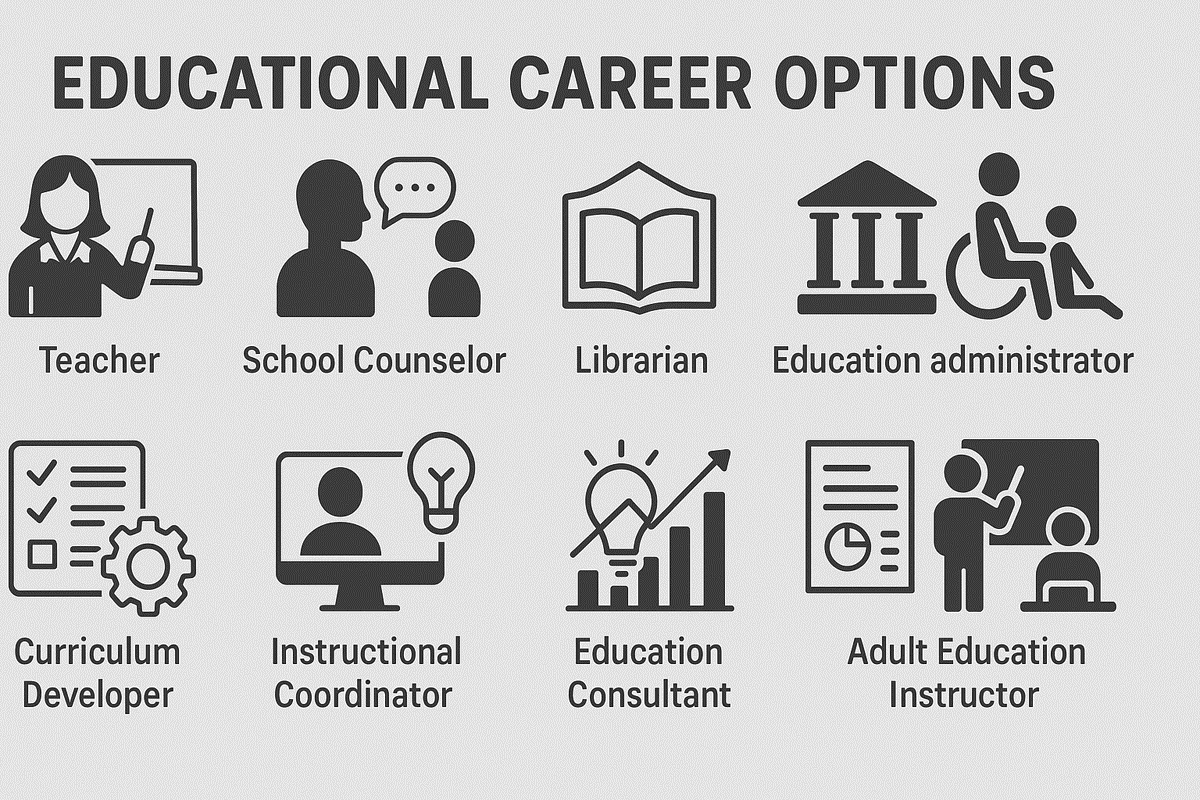
10 Types of Teaching Degrees
Thinking about becoming a teacher but unsure where to start? You're not the only one. With different degree options floating around—B.Ed., MAT, M.Ed., Ed.D.—it can get confusing quickly. Each one serves a different purpose and leads to different roles in education. Whether you’re dreaming of standing in front of a classroom, creating policy, or leading a school, there’s a path that fits your goals.
This article will walk you through ten widely recognized types of teaching degrees. You’ll learn what each degree offers, how long it takes, and what kind of career it opens up.
This isn’t guesswork—it’s built on data, expert consensus, and real-world examples to help you make the best decision for your future.

Why Teaching Degrees Important
Let’s be clear: not all teaching degrees qualify you for the same things. Some are designed for entry-level teaching, others for leadership or research. Some focus on practical training, others on theory. Knowing which degree fits your goals saves you time and effort—and helps you avoid expensive detours.
According to the U.S. Bureau of Labor Statistics, education jobs are expected to grow steadily over the next decade. But demand is highest for individuals with specialized or graduate-level training. Having the right degree improves your chances of employment and advancement.

Associate Degrees in Education
An associate degree is a two-year program typically offered at community colleges. It’s a great starting point if you want to explore the field without committing to a four-year degree right away.
Who It’s For
-
Aspiring preschool teachers
-
Teaching aides
-
Entry-level childcare workers
Pros
-
Affordable and quick to complete
-
Provides foundational coursework in child development and classroom behavior
-
Credits often transfer to a bachelor’s program
Limitations
-
Doesn’t qualify you to teach in public schools beyond preschool
Bachelor’s Degrees in Teaching
Bachelor of Education (B.Ed.)
This is one of the most direct paths to becoming a licensed teacher in many countries, including India and Nepal. It’s either offered as a standalone degree or integrated with a subject specialty.
Key Features
-
Usually spans 3–4 years
-
Includes both theory and in-classroom training
-
Often required for public school teaching roles
Bachelor of Arts or Science in Education (B.A./B.S.)
This is common in the U.S. and Canada. You’ll study both pedagogy and a subject area like English, Math, or Science.
Benefits
-
Builds subject-matter expertise
-
Meets requirements for teaching in most public schools
-
Includes student teaching components
Bachelor’s in Special Education
If you’re interested in supporting learners with disabilities, this is your go-to degree.
Why It’s Valuable
-
Growing global demand for inclusive education
-
Prepares you to teach in specialized classrooms or inclusive settings
According to the National Center for Special Education Research, educators trained in special education are more likely to stay in the profession long-term.
Master’s Degrees in Teaching
Master of Education (M.Ed.)
This is ideal if you already have teaching experience and want to move into leadership, curriculum development, or counseling roles.
Who It’s For
-
Teachers seeking promotion
-
Curriculum planners
-
School administrators
Note: It’s generally not used for initial licensure.
Master of Arts in Teaching (MAT)
This degree is for those who want to become teachers but didn’t major in education.
Advantages
-
Practice-focused with supervised teaching
-
Includes courses on lesson planning, classroom management, and educational psychology
Master of Science in Education (M.S.Ed.)
This one leans more toward academic research and educational theory. It’s a good stepping stone if you’re considering a doctorate later.
Education Specialist Degree (Ed.S.)
This is an advanced graduate degree positioned between a master’s and a doctorate.
Why It’s Useful
-
Specializes in school psychology, literacy coaching, or instructional technology
-
Allows deeper expertise without the long commitment of a Ph.D.
The National Association of School Psychologists recognizes Ed.S. as a minimum requirement for many school psychologist roles.
Doctoral Degrees in Education
Doctor of Education (Ed.D.)
Focused on real-world problem solving, this degree is for experienced educators stepping into senior leadership.
Where It Leads
-
Principal or superintendent
-
Education consultant
-
Policy advisor
Doctor of Philosophy in Education (Ph.D.)
This is a research-intensive program meant for academic and policy careers.
Outcomes
-
University professor
-
Educational researcher
-
Curriculum theorist
Most Ph.D. programs require several years of study, research publications, and a dissertation defense.
Alternative Teacher Certification Programs
These are fast-track options for individuals who already hold a bachelor’s degree in another field.
Why Consider It
-
Quicker path to classroom teaching
-
Helps fill high-need subject areas like science and math
Examples include Teach for America in the U.S. and the Postgraduate Certificate in Education (PGCE) in the UK.
Online Teaching Degrees
Online programs have become a flexible solution for working adults and those in remote areas. Today, many are offered by accredited universities and carry the same weight as on-campus degrees.
Benefits
-
Flexibility to study at your own pace
-
Access to a wide range of specializations
-
Often more affordable
The U.S. Department of Education reports that online education has grown by over 20% in the past five years.
Comparing Degrees: What You Get and Where You Go
| Degree Type | Duration | Licensure Path | Ideal For | Career Paths |
|---|---|---|---|---|
| Associate | 2 years | No | Beginners | Teacher Aide, Preschool Staff |
| B.Ed. | 3–4 years | Yes | K–12 | Subject Teacher |
| B.A./B.S. | 4 years | Yes | Public Schools | Middle/High School Teacher |
| M.Ed. | 1–2 years | Sometimes | Leadership | Principal, Curriculum Developer |
| MAT | 1–2 years | Yes | New Teachers | Educator |
| M.S.Ed. | 2 years | Sometimes | Research | Education Analyst |
| Ed.S. | 1–2 years | No | Specialists | School Psychologist |
| Ed.D. | 3–5 years | No | Leadership | Superintendent, Director |
| Ph.D. | 4–6 years | No | Academic | Professor, Policy Analyst |
How to Choose the Right Teaching Degree
Start with clarity. Ask yourself:
-
Who do I want to teach? Children, teens, adults?
-
Do I prefer teaching, planning, or managing?
-
Am I interested in research or practical application?
Local laws and licensing rules also matter. Teaching in Canada differs from teaching in Nepal or the UK. Always verify certification requirements for the region where you plan to work.
Real-Life Applications
A B.Ed. graduate in Nepal now teaches literacy in underserved districts, backed by a partnership with UNESCO. Another example is a U.S. MAT graduate who transitioned from engineering and now teaches high school physics.
According to the Bureau of Labor Statistics, master’s-qualified teachers earn about 15–20% more than those with only a bachelor’s. That pay bump, combined with stronger job security and career flexibility, makes further study worth considering.
Career Growth Through Teaching Degrees
More education can lead to:
-
Higher salaries
-
Administrative promotions
-
Consulting and training roles
-
Curriculum design work
According to OECD research, schools with more qualified teachers report better student outcomes and lower dropout rates.
Research-Based Benefits of Teaching Qualifications
-
RAND Corporation reports better student test scores in classrooms led by certified teachers.
-
Education Policy Institute (UK) notes higher teacher retention in schools supporting professional development.
-
UNESCO has flagged a shortage of trained teachers as a top barrier to achieving global literacy goals.
-
Teachers with graduate degrees are more likely to lead school-wide improvements, according to the American Educational Research Association.
-
Students in high-need schools benefit significantly when taught by specially trained educators.
Conclusion
Teaching degrees are more than academic credentials. They shape how—and where—you teach. Whether you start with an associate degree or aim for a doctorate, each path has a purpose. Your choice should reflect your career goals, your interests, and the impact you want to make.
Don’t rush. Take time to understand what each degree involves, what it prepares you for, and how it fits with the way you want to contribute to education. With thoughtful planning, your teaching degree becomes more than a qualification—it becomes a foundation for change.
FAQs
1. Can I become a teacher without a degree in education?
Yes, through alternative certification programs if you already hold a bachelor’s in another field.
2. Which degree is best for teaching in public schools?
Usually a B.Ed., B.A./B.S. in Education, or MAT that meets your country’s licensing rules.
3. How long does it take to become a teacher?
It depends. Associate degrees take 2 years, bachelor's 4, and alternative programs can be completed in 1–2 years.
4. Are online teaching degrees accepted?
Yes, as long as they are from accredited institutions and meet licensing standards in your area.
5. What degree do I need to become a principal?
A master’s like M.Ed. or even a doctoral degree such as Ed.D. is typically required for administrative roles.


